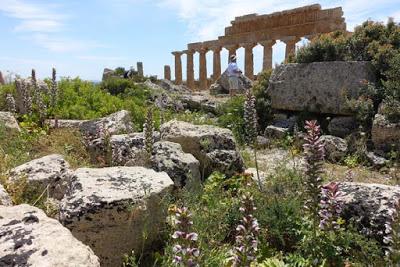
Selinunte, Sicily. Acanthus flowers grow among the ruins of Temple C on the Acropolis of the ancient Greek city of Selinunte. Their leaves inspired the design of the tops of the Corinthian columns.
At the end of May Art and I took a two week trip to Sicily, staying in Palermo, Erice and Catania, and taking day trips to the ancient Greek ruins at Selinunte, Segesta and Agrigento and to the ancient Roman villa filled with mosaics at Piazza Armerina. The weather was warm, but not hot, and hillsides were covered with a host of wildflowers. Here is the second of several reports of our trip.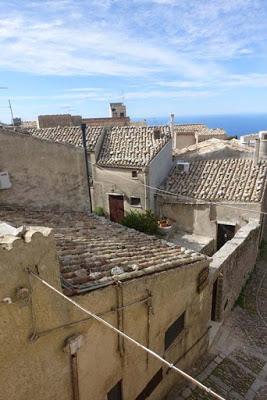
Rooftops and cobbled street in Erice.
After three days in Palermo, our next five nights were spent in the tiny hilltop town of Erice, about an hour and a half drive from the Palermo airport. The narrow cobbled streets, Norman castle, and old churches make you feel as if you have been transported in time to the Middle Ages–when Erice was a thriving center on Sicily’s west coast.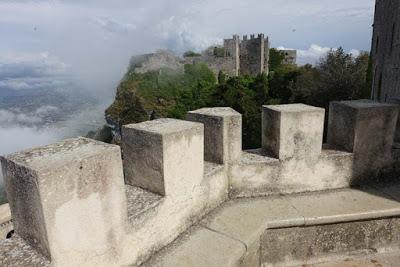
Erice. The Norman castle known as the Castle of Venus, built on the site of a 7th C. BC temple, was later converted to the Temple of Venus by the ancient Romans. The castle was a stronghold in the Middle Ages. Now it is an archeological site.
Today Erice is largely a tourist destination and the coastal town of Trapani below is the larger population center. Erice is the home of the Ettore Majorana Foundation, which was sponsoring a scientific conference that my husband Art was attending and the reason for our trip to Sicily. While Art was at his meetings I joined the tourists and wandered the streets, exploring the castle and other historic buildings and browsing in the shops along the main street. (Erice is small–one can walk around the whole town in an hour.)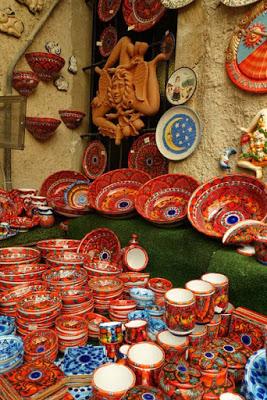
The trinacria, an image with a face in the center and three bent legs, is the ancient symbol of Sicily. Here is a terracotta version. Red glazed pottery is typical of the region.
The shops were full of local crafts–colorful rugs and pottery–and typical foods such as the curly busiati pasta, salt harvested from the shallow salt pans in Trapani and sweets for which Erice is famous.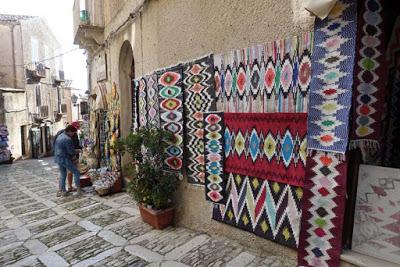
Colorful cotton rag rugs are a typical craft of Erice.
While most visitors to Erice are day trippers, either riding the cable car from Trapani or driving up the windy road to park outside the Erice town gate, there are a few hotels. We stayed in rooms provided by the conference center.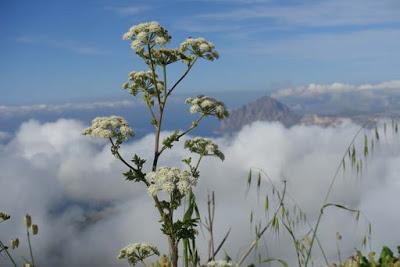
Queen Anne's Lace growing above the castle walls.
By evening the streets are mostly empty and on several nights that we were there the mist moved in from the sea creating a ghostly feel as the cool, moist air slid through the narrow streets.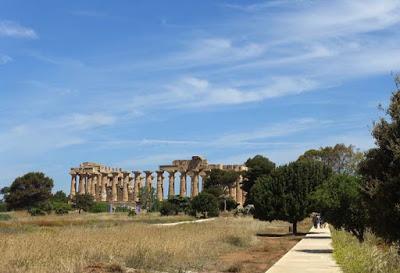
Selinunte, Temple E. This temple was reconstructed in the 1950s and is one of the few of the Greek ruins in Sicily that you can walk around and experience from the inside.
The last day of Art’s conference was an organized bus trip from Erice to the ancient Greek ruins at Selinunte and Segesta. Selinunte, about an hour’s drive from Erice on Sicily's south coast, was once a thriving Greek city covering 250 acres. Originally established in 638 B.C. by the Greeks, then taken over by the Carthaginians, it was abandoned after the Romans took over Sicily around 200 B.C. Today Selinunte is an archeological park, with piles of pieces from collapsed buildings, and one reconstructed temple where you can walk around the interior (unlike temples at other sites in Sicily) and imagine what it might have been like to live in ancient times.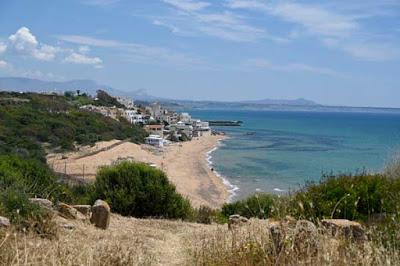
The modern seaside town of Selinunte, viewed from the archeological site.
Following paths lined with spring wild flowers, we explored the ruins, then went into town for a delicious lunch of risotto, pasta, seafood and fresh fruit at a restaurant overlooking the beach.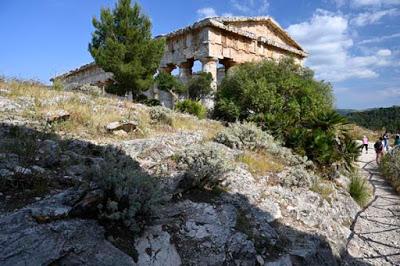
Ancient Greek temple at Segesta.
After lunch, we got back on the bus to drive to Segesta to see another Greek temple, this one perched high on a hill overlooking a gorge, and to see an amphitheater at the top of an adjacent hill. The temple was never finished (the columns are unfluted) and one view by historians is that it was built to impress a visiting delegation from Athens and then abandoned after they left.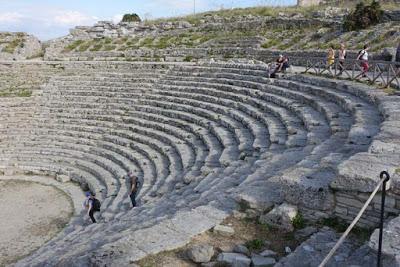
Ancient Greek theater at Segesta. It is known for its excellent acoustics.
An alternative to the long walk up the hill to the site of amphitheater is a small shuttle bus, which we took. We walked back down, enjoying the late afternoon sun that highlighted the temple and the roadside flowers.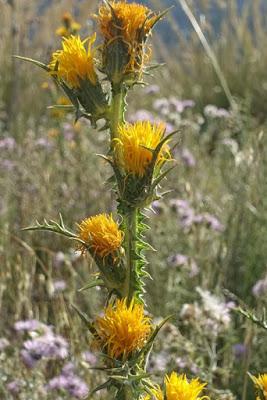
Several varieties of thistle are common in Sicily.
On our way back to Erice for our last night on Sicily's west coast, we enjoyed the views of rolling farmland and of the seaside below as the bus wound its way up to the top of the hill.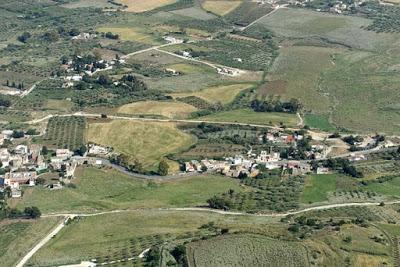
Sicilian countryside. View from Erice.
The following morning we headed back to Palermo and caught a train to Catania for five days on Sicily's east coast.